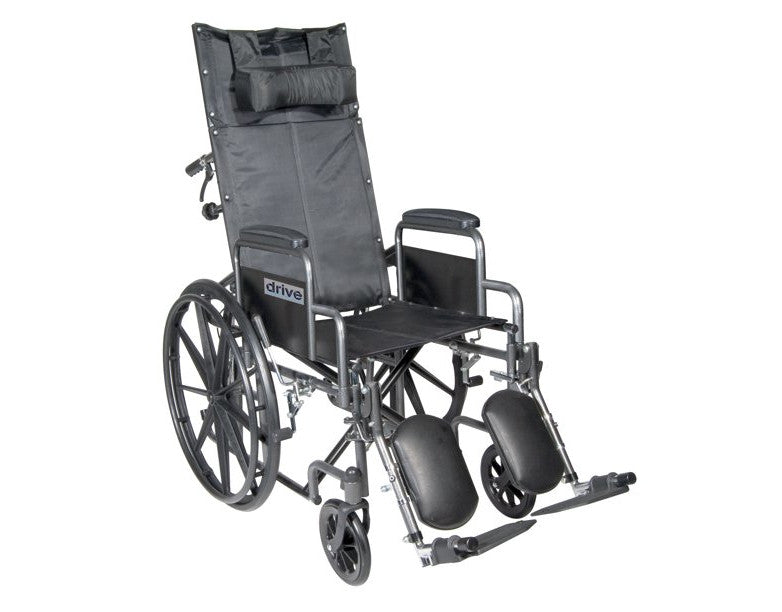Wheelchairs generally act as an extension of the body, providing people who use them with additional movement options and helping them regain independence of where they want to go, thus it is important to choose the right high-back wheelchair.
While most people believe wheelchairs are only used by people in permanent conditions, today’s wheelchairs also serve temporary needs and, unlike before, they now come in various styles in order to meet the needs of the diverse population using them.
Whether a wheelchair needs to be used for a few weeks or for the rest of one’s life, maintaining the freedom of mobility is crucial and affect the mental, emotional and physical wellbeing of its users. Fortunately, the constant thirst for technology to create better devices coupled with a positive new look into funding policies have transformed the models of wheelchairs available today. Wheelchairs today are more usable, versatile and customizable than ever before.
When it comes to manual wheelchairs, there are a few important parts that will determine how comfortable it is for users. The backs found on manual – and self-propelled ultra-lightweight wheelchairs is one of the most important indicators of good functionality. A good reclining back eases relaxation when used, but even the usability of a good wheelchair back relies on one overarching factor: height.
In manufacturing companies, the same backs are often produced in different heights. It is done this way to aid clinicians and providers in creating a seating pattern that closely fits the individual needs of different clients. Heights of wheelchair backs manufactured today range from low to high.
How Height Affects Functionality in Wheelchair Usage
Thanks to manufacturing companies, the height of wheelchair backs today are distinctive. Different back heights are produced to meet the different needs of different clients. Taller backs, for instance, provide more support but also limits the functioning of the upper extremity and the trunk when in use, and this makes it impossible to carry out an efficient self-propulsion.
According to clinicians, the severity of the support a client needs determines the height of the wheelchair back that will be recommended or used. Therefore, the ease of a client’s condition is directly correlated to the height of a wheelchair’s back.
For example, backs used by clients who suffer from low-thoracic SPI (spinal cord injuries) may only support the lumbar spine of the client and is unlikely to rise higher than that because they are low-back wheelchairs. Low-back heights are recommended in cases like this because clients with similar conditions need less support and already possess good trunk balance. Wheelchairs with this height support a helpful range of upper-extremity motion and enable decent rotation of the trunk as well.
High-back wheelchairs, on the other hand, offer much more intensive support. It is generally a more suitable choice for clients with fully-fledged conditions – for example, SCI patients with tetraplegia. High backs are the primary recommendation by clinicians for clients using recline and/or tilt as it provides clients with proper support while still using their positioning patterns.
Wheelchairs with high backs typically measure up to the edge of the client’s shoulder. They can also accommodate additional trunk support or headrests for clients who may need them. Another level of wheelchair back heights is mid-range. The mid-range backs offer extra postural support for clients who requires them. Its reduced height, however, also means less interference with upper-extremity function and motion.
Wheelchairs with mid-level backs generally measure up to the client’s lower scapula region. They can also accommodate additional lateral trunk support in order to provide clients with more steadiness in motion while at the same time not interfering with their upper extremities any more than is needed.
Other Factors Affecting Back Height Choices
In addition to the number of both functional and clinical factors that determine the choices of back heights, there are several other considerations providers have to keep in mind when making the final decision on the best fit for a client:
Transportation Issues:
A wheelchair can be used in a number of ways. If the client intends to frequently use the wheelchair when transiting in automotive vehicles, a higher backrest may be required in order for it to be able to be attached to a chest harness or any similar passenger restraint system. As part of the seating and mobility evaluation, providers should collect information from clients about transportation expectations and determine whether what will be most suitable in meeting those safety policies.
Weight:
It is important for automotive wheelchair users to keep their chairs as lightweight as possible. As a result, any component of these chairs that add unnecessary weight is gotten rid of. Different components can determine the weight of the back used in the wheelchair, irrespective of the model. So, even when clinicians and clients make a choice about a back height, they still have different products to be sorted out from that height category.
Lifestyle:
Lifestyle plays a crucial role in how helpful a wheelchair becomes. If a client is not comfortable with the wheelchair back that is recommended or chosen, perhaps because it interferes with the way the client executes regular activities, the client is less likely to spend adequate time in the system and could consequently be less functional. Although professional recommendations are required to meet the clinical needs, a full assessment of how it will fit into the client’s lifestyle is also crucial when it comes to choosing a back height.
It is helpful to take the time to elaborate on the pros and cons of the wheelchair back chosen. Providers can explain why the rehab team is recommending a particular back height, model, cover, material, etc. Empathy is also required as this encourages clients to be more outspoken and compels them to ask questions and air any concern they may have.
Clients may worry that they may be unable to carry out regular activities that are important to them. In this case, providers or the evaluation team can brainstorm and work out a means to enable clients still function well while still using the seating and mobility system that corresponds to their clinical needs.
The biggest perk of this evolving wheelchair system for both clients and rehab professionals is that backs of all heights are customizable and now provide more options than ever before to devise a new, unique and clinically advantageous system whenever necessary.
Conclusion
We hope you liked our article on choosing the right high back wheelchair, and that it was helpful. Please let us know if you have any questions or if you would like to see more of these types of articles to our site.
We also have a special offer for you. Enter coupon code EW6 at checkout and it will apply a 6% discount. This offer won't be around long, so act soon! See product pages for details and if you have any questions feel free to give us a call at 800-682-9444. One of our agents will be happy to assist you. We are open every day from 8AM - 8PM est!
If you are more interested and looking for other related articles, our staff compiled a great list of articles like Key Measurements to Determine the Best Wheelchair Fit and our 3 Tips for Choosing Better Wheelchair Wheels and have had some great feedback on those articles as well.
Feel free to write me anytime at kellon@electricwheelchairsusa.com if you have any questions or comments. At Electric Wheelchairs USA, we truly love helping our customers make the best choice for their needs whether it is a power chair, mobility scooter, or lift chair.







